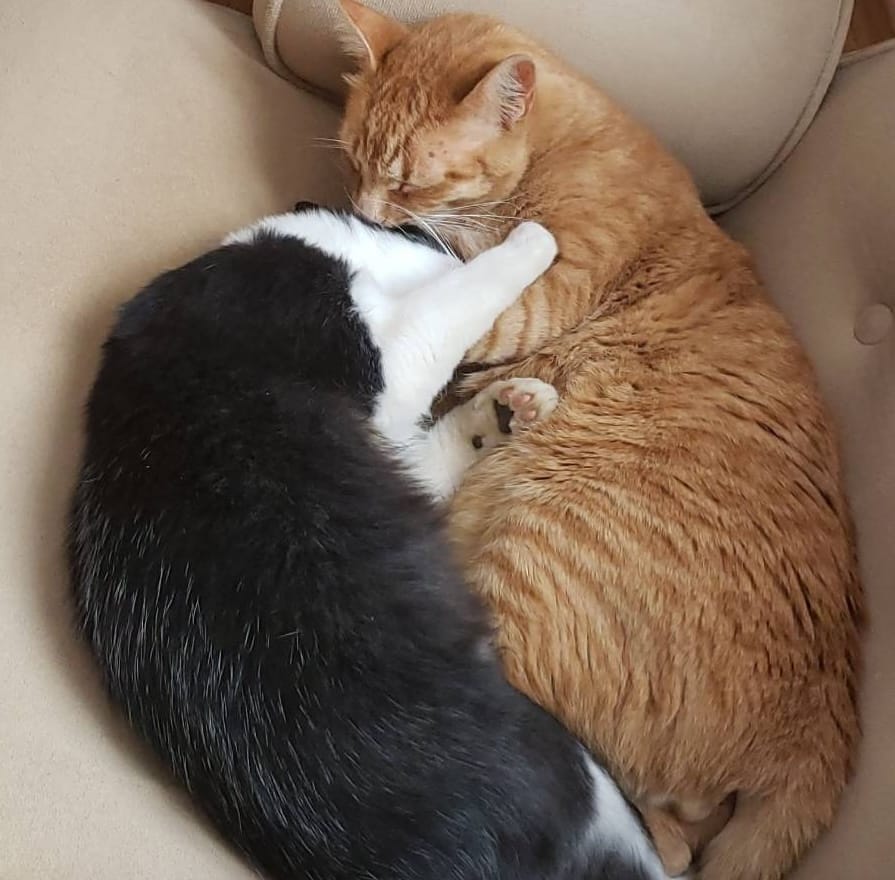How to create a personal vision
Visions must have 3 characteristics: They clearly contrast present and future, they are about outcomes "out there" in the real world, and they inspire us to act

You need to know where you want to be to make good decisions today.
The best way to do that is to have a personal vision.
Creating a personal vision isn't hard, but we can get stumped sometimes about how to start it.
So here's how I do it.
My "brown belt plan"
My personal vision is called "The brown belt plan."
The brown belt plan is my vision of being an advanced amateur in my personal pursuits.
It's quirky! But it happened naturally, and so I left it at that. Here's how it started:
I was a jiu-jitsu white belt, and becoming a black belt would typically take me, same as other hobbyists, about 10 years.
So I asked myself, "What is a reasonable thing to pursue, and in what timeline?"
To make it more manageable, I settled on a 5-year timeline to get a brown belt, the belt that comes before black.
But since I was thinking about the future, I decided to think about other areas in my life: where would I be in about 5 years as a guitarist, runner, writer, mentor, etc?
And then I asked this quirky question: "What would it mean to have a brown belt in each area?" I was new or had a beginner's level of competence – a white belt, in several of these personal pursuits.
Even for some areas where I was more advanced, like playing the guitar, I could find areas where I was a beginner and wanted to improve in, like composition.
I started thinking about how much progress I could make in each field within 5 years.
The answer is a lot. 5 years is plenty of time to advance in almost anything.
So I jotted them down: strength training goals, composition, writing, everything – outlining what "a brown belt" in each area would be like.
But what does a vision look like, exactly? What was I jotting down?
Visions have contrast, outcomes, and inspiration
Visions must have 3 characteristics:
- They clearly contrast present and future
- They are about outcomes "out there" in the real world
- They inspire us to act
Contrast between present and future
To start, a vision contrasts our current reality and our desired future.
Humans struggle to see the whole at once, but we easily see differences between two things.
We soon zone out of the sound in a room with the air conditioner turned on. Then they turn it off, and suddenly, we notice the silence; the difference.
When Microsoft in the 80s had a vision of "A computer in every home," it didn't need to say much else.
A vision quickly states the difference between the present and the future, even if it makes the present implicit.
Outcomes "out there" in the real world
A vision talks about an observable difference in the future. Ideally, but not necessarily, one that can be easily measured.
It's much harder to have a vision about something reflective or a statement of skill, "I learn the piano" or "I am not worried about money."
But you can have a strong vision that describes something observable like "I can play all Chopin études and ballades" or "I'm financially independent."
Outcomes should be readily observable, even if they're not easily measured.
They inspire us to act
Visions inspire.
The cliché difference between building a wall and a cathedral works because cathedrals are beautiful and spiritual symbols.
There's a reason why the cliché story doesn't go: "I'm not building a wall, I'm building another office building!"
The vision should give you that feeling of "yes, that's what I want!" whenever you think about it. It makes you want to materialize it.
If a vision doesn't inspire you, you won't keep it top of mind.
Schwarzenegger's vision
Arnold Schwarzenegger has written a book on his 7 tools for life, called Be Useful. He's been highly successful as a bodybuilder, movie star, and politician.
His very first lesson? Have a Clear Vision:
That is what a clear vision gives you: a way to decipher whether a decision is good or bad for you, based on whether it gets you closer or further away from where you want your life to go. Does the picture you have in your mind of your ideal future get blurrier or sharper because of this thing you’re about to do?
The happiest and most successful people in the world do everything in their power to avoid bad decisions that confuse matters and drag them away from their goals. Instead, they focus on making choices that bring clarity to their vision and bring them closer to achieving it. It doesn’t matter if they’re considering a small thing or a huge thing, the decision-making process is always the same.
The only difference between them and us, between me and you, between any two people, is the clarity of the picture we have for our future, the strength of our plan to get there, and whether or not we have accepted that the choice to make that vision a reality is ours and ours alone.
Schwarzenegger, Arnold. Be Useful (pp. 5-6). Penguin Publishing Group. Kindle Edition.
Here's he talking about how he used it in detail to move to America and becoming a champion bodybuilder:
When I was a boy I could see myself in America. I had no idea what I was doing there, but I was there. I could feel the tropical sun on my skin and the sand between my toes. I could smell the ocean and hear the waves—even though I’d never experienced either of those things in my life.
When I fell in love with bodybuilding, I didn’t have vague hopes of becoming a champion. I had a very specific vision of it, borrowed from the pictures inside muscle magazines of guys like Reg Park celebrating their victories. I could see myself on the top step of the podium holding the winner’s trophy. I could see the other competitors on the lower steps looking up at me enviously, but also in awe. I could see their tight smiles, I could even see the colors of their posing briefs. I could see the judges standing and applauding. I could see the crowd going wild and chanting my name. “Arnold! Arnold! Arnold!” This wasn’t a fantasy. This was a memory that just hadn’t happened yet. That’s what it felt like to me.
Schwarzenegger, Arnold. Be Useful (pp. 24-25). Penguin Publishing Group. Kindle Edition.
Getting started: bottom up and then jump
Unlike common advice, you don't need to start with a vision and then drill it down to a 5-year goal, 3 years, 1 year, 1 quarter, 1 month...
Personal visions are often built bottom up: there's something you're already doing, you're making progress, but then you ask – Wait, where am I going exactly?
Arnold has sage advice on this as well, so go with what he says:
First, create little goals for yourself. Don’t worry about the big, broad stuff for now. Focus on making improvements and banking achievements one day at a time. They can be exercise goals, nutrition goals. They can be about networking or reading or getting your house organized. Start doing things you like to do or that make you proud of yourself for having completed them. Do those things every day with a little goal attached to them, and then notice how doing that changes what you pay attention to. All of a sudden you will find yourself looking at things differently.
Once you’ve developed a rhythm with those little daily goals, create weekly and then monthly goals. Instead of zooming in from a broad place, build out your life from this small beginning and let your vision open up in front of you from there. As it does, and the sense of uselessness starts to loosen its grip, that’s when you take the second step: put the machines away and create space and time in your life, however small or short in the beginning, for inspiration to find its way in and for the discovery process to happen.
Schwarzenegger, Arnold. Be Useful (pp. 15-16). Penguin Publishing Group. Kindle Edition.
You must watch for that moment when the question opens up when you go from making daily progress to "What do I want to accomplish with this?"
When you're ready, you'll see the time to jump.
For the jump, you don't need to make your vision complicated – the simpler you can be, the better.
A simple sentence, a bulleted list of all your visions in each area, is OK.
Even if it's as simple as being a brown belt in Jiu-Jitsu.
